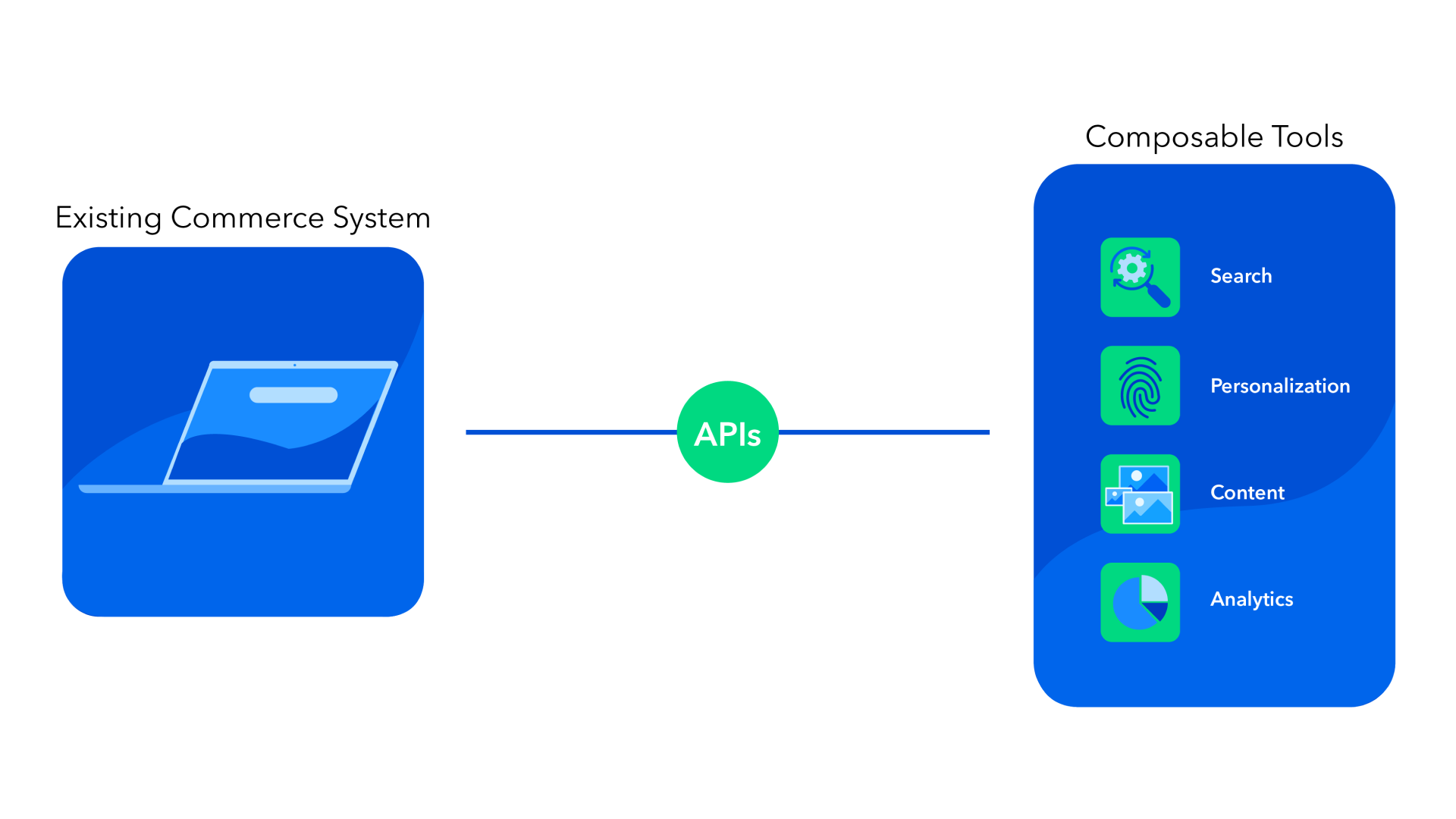
The Omnichannel guide
Mastering the art of omnichannel commerce

Lisa Lozeau
Updated: July 24, 2024

The Omnichannel guide
- 1. The Omnichannel Guide
- 2. Omnichannel vs multichannel: What are the key differences?
- 3. Tips for developing a successful omnichannel strategy
- 4. Designing an omnichannel experience
- 5. Omnichannel marketing: Delivering experiences at scale
- 6. Mastering the art of omnichannel commerce
- 7. Omnichannel customer service improves customer satisfaction
- 8. Omnichannel content management (CMS)
- 9. 5 tips for efficient omnichannel delivery
- 10. Signs your brand needs an omnichannel platform
This is chapter 6 of the series, The Omnichannel guide
Summary
Gone are the days when shoppers flocked to the mall to browse stores in person. Now they’re researching products online and asking for curbside pickup. Mobile apps have replaced storefront displays. And everyone is short on time and attention. Omnichannel commerce means meeting customers where they are with what they need in the moment.
Done well, omnichannel shopping experiences boost customer engagement, loyalty, and sales. Brands that master the art of omnichannel commerce stand out. Customers love them and are quick to abandon brands that can’t keep up.
In this chapter, we’ll see what industry leaders are doing and take a peek at the technology you need to support a successful omnichannel commerce strategy.
What is omnichannel commerce?
Omnichannel commerce is the seamless integration of all sales channels, but customers expect brands to go beyond integrating sales channels. Remember, people view every touchpoint as part of the brand experience. That means every part of the buyer's journey influences customer relationships for better or worse.
Omnichannel commerce delivers the most benefits when it’s part of a larger omnichannel strategy that integrates commerce with customer experience. Instead of a jarring “buy now” button followed by a bland checkout screen, brands are making shopping a delightful part of the customer experience.
For example, chatbots and AI-driven conversational tools make helpful product suggestions tailored to the context of the customer’s questions. Car companies, like BMW, are creating digital showroom experiences.
Sephora’s mobile app lets customers try on makeup virtually to find their perfect shade. And brands are tapping into user-generated content, creating thriving social media communities where customers share stories, tips, and advice.
An omnichannel strategy unifies multiple channels with a customer focus
As discussed in chapter one, omnichannel and multichannel commerce both use multiple channels to reach and engage customers. The key difference is that omnichannel puts the customer at the center and orchestrates messaging across channels.

Customers engage with an average of six touchpoints before purchasing, according to recent omnichannel statistics from CapitalOne Shopping. Without an omnichannel commerce strategy, those touchpoints can feel disjointed, distracting from the customer journey instead of driving customers toward a sale or conversion.
Drive measurable results
Omnichannel commerce is more than a trend. It’s how brands deliver personalized, connected experiences that drive repeat business, brand loyalty, and increase sales.
-
Omnichannel retailers retain 91% more customers.
-
Omnichannel customer engagement increases average sales revenue 9.5%.
-
Over 90% of marketers report that personalization leads to repeat business and increases sales.
Three principles for a successful omnichannel commerce strategy
Commercetools, a Contentful Technology Partner of the Year in 2023 and 2024, outlines three principles for a successful omnichannel commerce strategy:
Customer data & analytics: Brands need a single 360-degree view of the customers to personalize and optimize the customer experience.
Channel orchestration with APIs: To deliver cohesive customer experiences, brands need to connect data, content, and all the back-end tools they use into one harmonious system. Disconnects on the back end slow teams down and inevitably leak into customer-facing content.
Adaptability: Omnichannel commerce is always changing. Companies must be able to innovate and adapt quickly to stay competitive. This means embracing a composable approach that avoids vendor lock-in and lets you quickly integrate new tools, as well as ensuring the new technology you invest in is AI-ready.
Technologies that support omnichannel commerce
The hallmark of great omnichannel experiences is seamless integration between all the customer touchpoints regardless of channel. To deliver cohesive omnichannel experiences, teams need technologies that support that same level of integration on the back end.
Traditional ecommerce systems are powerful, but hard to integrate with new technologies
Traditional ecommerce architectures are big, monolithic systems with standardized tools for personalization, content management, search, etc. They’re powerful, but everyone using them has about the same capabilities. Embracing new capabilities, like AI-powered technology, can be challenging. This leads to time-consuming workarounds and experiences that, like the back-end tools, don’t fit together perfectly.
Composable solutions connect back-end tools to deliver the omnichannel commerce experiences customers crave
Enhancing your back end with composable commerce solutions lets you continue using the commerce system you love, while enabling you to tap into optimal tools for your business needs. A composable platform designed to connect systems seamlessly allows you to deliver captivating omnichannel experiences, faster.

Contentful lets you seamlessly connect existing systems with the best tools for your business so you can deliver content-driven experiences across channels, brands, and regions.
A composable approach to omnichannel commerce lets you deliver better customer experiences, faster
Composable tools, like the Contentful Composable Content Platform, help brands supercharge their omnichannel strategy. Contentful’s extensible platform lets you connect all the tools you need and can be integrated with existing systems so you can start seeing value sooner.
Increase customer satisfaction with knowledge bases, better customer support, AI-powered chat, and AI-driven recommendations. Integrate online channels with brick-and-mortar store experiences to wow your customers.
Save time with custom workflows that give teams access to the tools they need in one interface instead of requiring them to hop from system to system.
Add new capabilities to enhance the customer experience, like personalization, localization, and advanced analytics.
Extend your reach into more markets or by launching new products. Streamlining content operations and giving teams access to optimal tools, means they can tackle those bigger goals.
Shifting gears from legacy tools to a composable content platform, empowers Rapha to say “yes” to new ideas and experiences that bring their cycling products to life
Up next: Omnichannel customer service
Explore effective omnichannel customer service strategies, their importance, integration of channels and data, and real-world examples.
Written by

Lisa Lozeau
Lisa Lozeau is an expert in content strategy, content creation, and content marketing, where she has utilized these skills as a writer at Contentful for over 6 years. She has led marketing programs across several industries on a variety of platforms. Well-versed in the limitations of traditional CMSes, she is passionate about innovative solutions.
